
 "Labor is developing what is meant to be the most fundamental restructure of the Victorian planning system since the 1996 introduction of the Victoria Planning Provisions, the new Smart Planning program. [...] A simpler, more efficient and certain planning scheme is long overdue, but Smart Planning is not the way to provide it. This is a $25 million program managed through the Smart Planning program Rules team. If the system is simply to implement five minor changes, along with online access, then the program is a massive waste of money. Alternatively, if future stages are to radically change the system, then the government is hiding its intentions, locking out community groups from the process, and intends to present the public with a fait accompli." (Professor Michael Buxton*)
"Labor is developing what is meant to be the most fundamental restructure of the Victorian planning system since the 1996 introduction of the Victoria Planning Provisions, the new Smart Planning program. [...] A simpler, more efficient and certain planning scheme is long overdue, but Smart Planning is not the way to provide it. This is a $25 million program managed through the Smart Planning program Rules team. If the system is simply to implement five minor changes, along with online access, then the program is a massive waste of money. Alternatively, if future stages are to radically change the system, then the government is hiding its intentions, locking out community groups from the process, and intends to present the public with a fait accompli." (Professor Michael Buxton*)
Labor is developing what is meant to be the most fundamental restructure of the Victorian planning system since the 1996 introduction of the Victoria Planning Provisions, the new Smart Planning program.
For the first time, the government has issued a tender for significant private sector involvement in the development of this program. A private consulting company has been given the significant role in developing what is meant to be further privatisation of the planning system.
Nobody knows what the precise instructions to this firm are because few public criteria were provided. However enough is known to provide a broad outline of government intentions. Criteria include the need to reduce regulation and regulatory costs by simplifying planning rules particularly through code assessment, lowering the level of permit triggers, increasing ‘as-of-right’ approvals and reducing local variation. The result will be a new model planning scheme which includes a new structure for the Victoria Planning Provisions (VPP) and new content including revised zones, overlays and particular provisions.
The new system is being promoted on the need to ‘simplify and modernise Victoria’s planning rules’, reduce complexity and increase efficiency. The rhetoric of ‘cutting red tape’ and ‘reform’ are used to sell an increasingly deregulated system.
Stages in the process
There are two main elements to the process:
• The Rules and Policy stream which is making changes to the regulatory content and structure of the VPP;
• The Systems Stream which will make substantial changes to online planning information including a single point of entry to information, an online lodgement system for permits and planning scheme amendments, the content of planning schemes, and interactive state-wide maps. At this stage, this component will not include a single online centralised portal for all planning applications.
Under the Rules and Policy stream, the government envisages four stages in the process.
Stage 1 was the addition of further categories to VicSmart focusing on residential zones
Stage 2 will comprise a first package of further changes to VicSmart, and allegedly minor changes to the VPPs..
Stage 3 is intended to include a major restructure of the VPP and implemented in mid-2018.
Stage 4 will ‘further reshape the planning system’ in even more fundamental ways. under a program titled Transform.
Consultation
The property industry is an enthusiastic advocate for Smart Planning. The Property Council, for example, stated that the new system “is exactly what the doctor ordered…to cut red tape…and accelerate decision making”.
However, community groups have been locked out of the entire Smart Planning process.
Property and professional groups are represented on the technical reference and advisory groups for the program but not residents. The following groups are represented on the advisory group:
• Municipal Association of Victoria
• Australian Institute of Architects
• Building Designers Association of Victoria
• Housing Industry Association
• Master Builders Association of Victoria
• Planning Institute of Australia
• Property Council of Australia
• Urban Development Institute of Australia
• Victorian Planning and Environmental Law Association.
No members of relevant community groups of the public are represented on either the technical or the advisory group.
A Smart Planning presentation to industry organised by the Planning Institute on 31 October, proposed the following reasons for the exclusion of the public from consultation:
• Members of the public are incapable of understanding strategic planning
• Members of the public might initially object to changes to planning systems or specific developments but invariably ultimately accept them
• The large number of past reports into planning make further public consultation unnecessary.
A survey was released into potential VPP changes with a completion date of 10 July. Professionals made up most of the 688 respondents.
A discussion paper into broad proposals for Stage 1 changes was released on 16 October along with an online questionnaire with responses required by 24 November.
Stage 1 changes to VicSmart were introduced without the opportunity for public consultation in mid 2017.
Stage 2 changes will be presented to the minister and, if necessary, cabinet for approval in December for immediate adoption. This means that changes to the planning system will be immediately implemented without making the content of changes publicly available prior to adoption. The public will be presented with a fait accompli.
Stage 3 and 4 changes are expected to proceed in the same way as stage 2.
VicSmart changes
The government introduced a dual track approval system into Victorian planning with the enactment of the Planning and Environment Amendment (VicSmart Planning Assessment) Act in September 2012. Clauses 90–95 inserted into the VPP implement the VicSmart system. The Act establishes a different approval procedure for a separate class of applications but does not define this class or specify these applications. These are listed in clause 92 and initially comprised relatively minor and uncontroversial applications for various zones including subdivision to align a common boundary; construction of a fence, carport or garage; and construction of buildings and works of less than $50,000 in value not within 30 metres of a residential zone.
Clause 91 sets out the process for VicSmart applications. Applications must be processed within 10 business days and are exempt from notice, decision guidelines and review rights, policies or other provisions, although applicants may appeal a decision by the responsible authority; the responsible authority cannot request further information; authorities cannot act as referral authorities for comment on an application; environmental impacts cannot be considered; and councillors are excluded from decisions.
The government justified the introduction of a separate track by the need for a streamlined permit process aimed at ‘straightforward, low impact development proposals’, intended to ‘reduce frustration and unnecessary red tape for families wanting to make simple improvements to their homes’ and reduce ‘unnecessary delays and costs in Victoria's planning system’. However, the failure of the legislation to list the class of applications and conferring on the minister the power to develop and alter the list without further reference to parliament has allowed the progressive extension of the system by expanding the classes of applications. The then Shadow Minister for Planning, Brian Tee, commented in the parliamentary debate on the VicSmart Bill that ‘we all know that this legislation is much broader in its scope; the sky is the limit’.
The 2017 changes to VicSmart were introduced through Amendment VC137. This allowed extensions to dwellings in residential zones without a permit, and doubled the class of applications for buildings and works in a range of zones to $100,000.
These VicSmart changes have helped double VicSmart applications to 8 per cent. Further Stage 1 changes are expected to increase them to 14 per cent, ultimately rising possibly to one third of all applications. The 2016 budget estimates states that the Smart Planning program “will enable an extension to the VicSmart process, including the targeted removal of permit requirements in commercial and industrial zones, allowing faster approval times for certain development proposals….[its] proportion of planning permit applications will increase over time as reforms aimed at streamlining the planning system take hold”. It is likely that this process will reduce or remove existing rights to notice and appeal against classes of medium and high rise developments.
Stage 2 changes
Vicsmart will be integrated into particularly provisions and overlay schedules and other provisions. At present, VicSmart operates as a separate section at the end of planning schemes. Its integration into other provisions will entrench it structurally, providing codified assessments, uses and developments exempt from permits and applications exempt from notice or review. This integration will make further increases to VicSmart applications inevitable. A list of five new classes of applications is proposed at present.
Local and State planning policy will be integrated. Since local policy cannot contradict State policy, this will probably weaken local policy.
Streamlined assessment pathways will be provided by amending specific provisions to add building and works exemptions, reduce permitted applications by increasing ‘as-of-right’ uses and developments, and reduce the number of prohibited uses.
Drafting and procedural changes will be made.
Stage 3 and 4 changes
The discussion paper does not outline these. However, it is clear from the October 2017 discussion paper, Reforming the Victoria Planning Provisions, and other Smart Planning material, that radical changes to the planning system are envisaged under stages 3 and 4.
A revealing indicator of the government’s approach is the reference to the Leading Practice Model for Development Assessment prepared by the Development Assessment Forum in 2005. This influential model prepared by a body composed primarily of development and professional groups has been progressively implemented by all State governments to deregulate planning systems. The paper also refers to the use of code assessment and exemptions in New South Wales and Queensland systems. These are the most deregulated in Australia. Yet the government’s overall aim for Smart Planning is to “make Victoria’s planning system the most efficient and responsive in Australia”.
The government provides little detail of how radically the Stage 3 and 4 changes will further deregulate the planning system. However, the documentation provides a sense of what is envisaged. A progressive process of change is envisaged through “successive VPP and planning scheme amendments”. The program “seeks to deliver long term, transformative changes to the planning system”. The discussion paper proposes code assessment for multiple dwellings in defined locations, increasing code assessment to remove “entirely from the need for assessment” more applications, and applying VicSmart to complex applications. The Transform process would “further reshape the planning system” for the next 30 years.
Some proposed more detailed amendments to provisions include:
• Exempt single dwellings on lots above 300 square metres.
• Increase exempt uses in commercial and mixed use zones
• Make office an exempt use in the Industrial 3 zone.
• Increase exempt commercial uses in the Farming zone.
• Review the need for permits under all overlays and liberalise Floodway and Land Subject to Inundation overlays.
• Exempt car parking requirements in nominated zones
• Exempt premises in commercial zones from planning permits for licenced and gambling premises
• Further deregulate the Heritage Overlay by removing the need for permits for dry stone walls.
• Remove clause 57 providing greater control over uses and developments in green wedge land.
• Remove the powers of referral authorities
• Review the role of Section 173 agreements and decision guidelines.
Omissions
A simpler, more efficient and certain planning scheme is long overdue, but Smart Planning is not the way to provide it. This is a $25 million program managed through the Smart Planning program Rules team. If the system is simply to implement five minor changes, along with online access, then the program is a massive waste of money. Alternatively, if future stages are to radically change the system, then the government is hiding its intentions, locking out community groups from the process, and intends to present the public with a fait accompli.
The Smart Planning process addresses none of the major problems associated with the VPPs. These problems all arise from the lack of effective regulation, not the need for further deregulation. In particular
• The recent deregulation of the residential zones should be reversed
• Height controls should be added to the commercial and mixed use zones to protect historic strip and local retail centres
• The extensive out-of-centre development allowed in commercial zones, which allows further unfair competition with traditional centres and entrenches car based centres, should be controlled.
• The few prohibited uses in commercial and mixed use zones should be expanded
• Greater heritage protection should be provided to historic industrial areas to require building reuse not demolition.
• The former rural zones should be reinstated
• Commercial uses should be prohibited in Green Wedge zones and all uses not listed in section 2 prohibited.
• Vague and contradictory decision guidelines and objectives should be rewritten in a clear, regulatory manner.
• The widespread inadequate application of standard provisions to land by local councils should be addressed to better match provisions to local conditions and need.
* About Michael Buxton
Michael Buxton is Professor of Environment and Planning at RMIT University and former head of the RMIT planning program. He spent 12 years in senior management in planning and environmental agencies in the Victorian Government and has written widely on urban form, peri-urban development and environmental policy.

 We publish the joint statement here. Unfortunately these two bodies, in our opinion, whilst obviously well-meaning, have entirely neglected the demand side of the equation. They are comforting the property developers' agenda of densification when they should be pointing out that this is an abuse of power that depends on a false narrative confining all discussion to the 'supply' side.
We publish the joint statement here. Unfortunately these two bodies, in our opinion, whilst obviously well-meaning, have entirely neglected the demand side of the equation. They are comforting the property developers' agenda of densification when they should be pointing out that this is an abuse of power that depends on a false narrative confining all discussion to the 'supply' side. Zoroastrians in Iran once worshiped dogs. Today Iran has dog-walking bans in over 20 cities, adding a layer of hardship for pet owners and their dogs, who face arrests or confiscation for simple acts of companionship. This clampdown, which has nothing to do with the Koran - see more below - stems from some local views of dogs as impure or Western symbols. Iranians surely don't need more suffering, imposed by their own.
Zoroastrians in Iran once worshiped dogs. Today Iran has dog-walking bans in over 20 cities, adding a layer of hardship for pet owners and their dogs, who face arrests or confiscation for simple acts of companionship. This clampdown, which has nothing to do with the Koran - see more below - stems from some local views of dogs as impure or Western symbols. Iranians surely don't need more suffering, imposed by their own. A Prohibition Act passed 20 years ago stands as NT parliament's legal opposition to plans to dump nuclear waste in the NT. It simply prohibits handling, transport and storage of long-lived intermediate-level and high-level nuclear wastes (materials which are only found in the form of spent reactor fuel).
A Prohibition Act passed 20 years ago stands as NT parliament's legal opposition to plans to dump nuclear waste in the NT. It simply prohibits handling, transport and storage of long-lived intermediate-level and high-level nuclear wastes (materials which are only found in the form of spent reactor fuel). Unfortunately the 'Online Safety Amendment (Protecting Australian Children from Online Harm) Bill 2023 passed the Australian Senate last night, with an amendment to be inserted after section 63D. I attach both the bill and the Senate amendment to the bill.
Unfortunately the 'Online Safety Amendment (Protecting Australian Children from Online Harm) Bill 2023 passed the Australian Senate last night, with an amendment to be inserted after section 63D. I attach both the bill and the Senate amendment to the bill.  In light of the looming Combatting Misinformation and Disinformation ('M.A.D) Bill,[1] Prof. Andrea Carson and Dr Max Grömping's paper looks into the real state of the information environment in Australia in comparison to other countries, focusing on the exaggerated perceived threat of so-called misinformation and disinformation on public information quality and how any harmful effects might be combatted without draconian censorship laws.
In light of the looming Combatting Misinformation and Disinformation ('M.A.D) Bill,[1] Prof. Andrea Carson and Dr Max Grömping's paper looks into the real state of the information environment in Australia in comparison to other countries, focusing on the exaggerated perceived threat of so-called misinformation and disinformation on public information quality and how any harmful effects might be combatted without draconian censorship laws. 
 Our government has shown itself to be a major source of harmful misinformation and disinformation [...] and now they want to shut down your free speech which is a foundation of our democracy to allow them to crush dissent. Don't let them do it. Call you Federal Senator NOW. (Republished from communications from
Our government has shown itself to be a major source of harmful misinformation and disinformation [...] and now they want to shut down your free speech which is a foundation of our democracy to allow them to crush dissent. Don't let them do it. Call you Federal Senator NOW. (Republished from communications from 
 While the
While the  "There are three aspects of the draft Exposure Bill that are of real concern: the first relating to the role of a council albeit its relationship to its community, the second the role of mayor and deputy mayor in their relationship to other councillors, and the third the electoral system and its relationship to its electors. [...] A duly elected city council should not be subservient to the State or proscribed a role that undermines the capacity of a council to engage with its community on a broad range of issues that impact on our lives. [...] The view that what is good for other levels of government should be replicated at the local level. This reinforces that local government is ‘government’ and not an administrative arm of the State." [Candobetter.net Editor: The state government is obviously trying to remove the capacity of residents to affect what happens in their local environment and suburb. We already have almost no democratic power at state or federal level - just reduced to a risible function of voting for Tweedledum or Tweedledumber. But local government is where it all happens. This is the first line of population policy, because the councils say whether there can be subdivision or new housing, which is what dictates population growth. VCAT has been used and abused by the State government to overturn council judgment, as has the insertion of State-paid Council CEOs. This attempt to rewrite the Act risks annihilating local governments in all but name. See also 'Population and Development Battlefronts' at the end of the statement by Fitzroy Council.]
"There are three aspects of the draft Exposure Bill that are of real concern: the first relating to the role of a council albeit its relationship to its community, the second the role of mayor and deputy mayor in their relationship to other councillors, and the third the electoral system and its relationship to its electors. [...] A duly elected city council should not be subservient to the State or proscribed a role that undermines the capacity of a council to engage with its community on a broad range of issues that impact on our lives. [...] The view that what is good for other levels of government should be replicated at the local level. This reinforces that local government is ‘government’ and not an administrative arm of the State." [Candobetter.net Editor: The state government is obviously trying to remove the capacity of residents to affect what happens in their local environment and suburb. We already have almost no democratic power at state or federal level - just reduced to a risible function of voting for Tweedledum or Tweedledumber. But local government is where it all happens. This is the first line of population policy, because the councils say whether there can be subdivision or new housing, which is what dictates population growth. VCAT has been used and abused by the State government to overturn council judgment, as has the insertion of State-paid Council CEOs. This attempt to rewrite the Act risks annihilating local governments in all but name. See also 'Population and Development Battlefronts' at the end of the statement by Fitzroy Council.]  To me the “Electoral Legislation Amendment (Electoral Funding and Disclosure Reform) Bill 2017” is more of the same – putting out a spot fire/diversionary tactic. The bill may be aimed at so-called charities that provide political advocacy while at the same time accommodating such advocacy through the back door, the bill may claim some smaller fry that are, to the government, collateral damage. Instead of addressing political donations head-on, we pathetically tinker around at the edges. As the dust settles the sharks that were dominating the pond are still there while the sardines have been thinned out!
To me the “Electoral Legislation Amendment (Electoral Funding and Disclosure Reform) Bill 2017” is more of the same – putting out a spot fire/diversionary tactic. The bill may be aimed at so-called charities that provide political advocacy while at the same time accommodating such advocacy through the back door, the bill may claim some smaller fry that are, to the government, collateral damage. Instead of addressing political donations head-on, we pathetically tinker around at the edges. As the dust settles the sharks that were dominating the pond are still there while the sardines have been thinned out!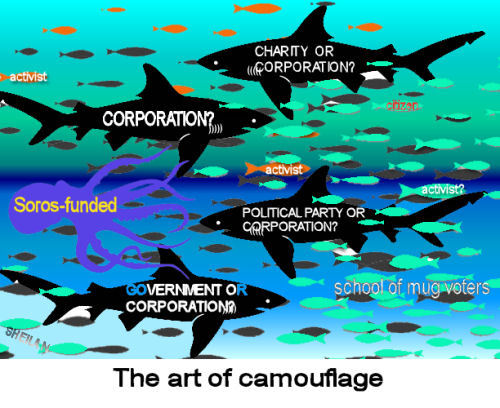
 “We are all an involuntary part of a social revolution, where political parties feel entitled to take ownership of our individual rights to real and personal property, and where our civil and political rights are abused and overridden by the many politically created entities within the Australian Government System.” (Larry Hannigan).
“We are all an involuntary part of a social revolution, where political parties feel entitled to take ownership of our individual rights to real and personal property, and where our civil and political rights are abused and overridden by the many politically created entities within the Australian Government System.” (Larry Hannigan).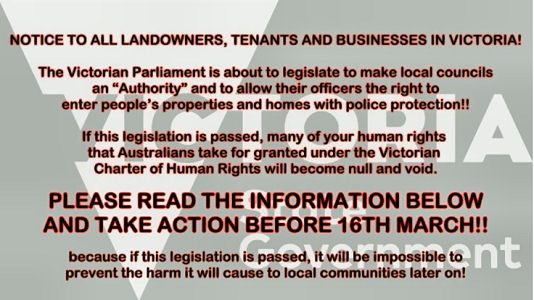
 "We cannot hide the fact that the European left has a clear agenda. They are supportive to migration. They actually import future leftist voters to Europe hiding behind humanism. It is an old trick but I do not understand why we have to accept it. They consider registration and protection of borders bureaucratic, nationalist and against human rights. They have a dream about the politically constructed world society without religious traditions, without borders, without nations. They attack core values of our European identity: family, nation, subsidiarity and responsibility. [...] We have a heartfelt compassion for the people who left their homes. They are victims of the bad governance of their own countries. They are victims of bad international political decisions. And they are victims of our bad European policy as well which raises expectations that are impossible to be fulfilled. They are obviously victims of the human traffickers. But considering them victims must not turn ourselves into being victims. Just because we do not consider them enemies we must not act against ourselves. Our moral responsibility is to give back these people their homes and their countries. It can’t be our objective to provide them with a new European life. Right to human dignity and security are basic rights. But neither the German, Austrian nor the Hungarian way of life is a basic right of all people on the Earth. " (Speech of Viktor Orbán at the EPP Congress in Madrid, on the 22nd of October in 2015 - more than ever, relevant today.)
"We cannot hide the fact that the European left has a clear agenda. They are supportive to migration. They actually import future leftist voters to Europe hiding behind humanism. It is an old trick but I do not understand why we have to accept it. They consider registration and protection of borders bureaucratic, nationalist and against human rights. They have a dream about the politically constructed world society without religious traditions, without borders, without nations. They attack core values of our European identity: family, nation, subsidiarity and responsibility. [...] We have a heartfelt compassion for the people who left their homes. They are victims of the bad governance of their own countries. They are victims of bad international political decisions. And they are victims of our bad European policy as well which raises expectations that are impossible to be fulfilled. They are obviously victims of the human traffickers. But considering them victims must not turn ourselves into being victims. Just because we do not consider them enemies we must not act against ourselves. Our moral responsibility is to give back these people their homes and their countries. It can’t be our objective to provide them with a new European life. Right to human dignity and security are basic rights. But neither the German, Austrian nor the Hungarian way of life is a basic right of all people on the Earth. " (Speech of Viktor Orbán at the EPP Congress in Madrid, on the 22nd of October in 2015 - more than ever, relevant today.) "The proposed “Smart Planning” must not proceed in its current form. The Group does not support fast tracking development, weakening permit or planning triggers or referral requirements, or permit exemptions, or the removal of appeal rights." Inside find Port Campbell Community Group Inc's submission to the Victorian Planning Provisions Discussion Paper.
"The proposed “Smart Planning” must not proceed in its current form. The Group does not support fast tracking development, weakening permit or planning triggers or referral requirements, or permit exemptions, or the removal of appeal rights." Inside find Port Campbell Community Group Inc's submission to the Victorian Planning Provisions Discussion Paper.
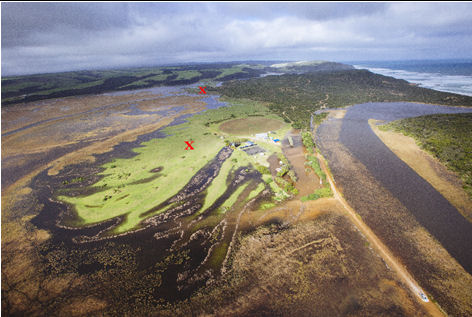
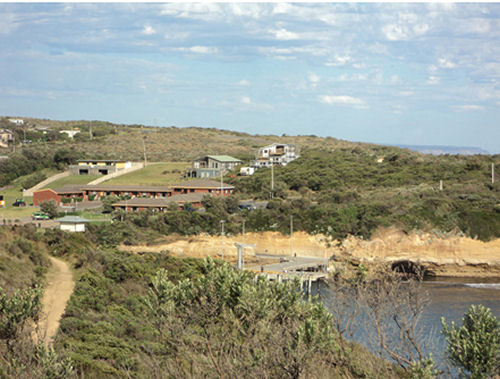
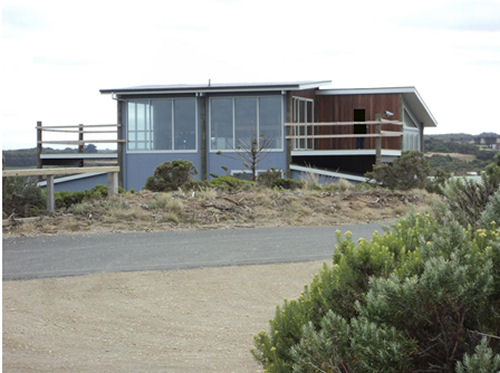

 "Labor is developing what is meant to be the most fundamental restructure of the Victorian planning system since the 1996 introduction of the Victoria Planning Provisions, the new Smart Planning program. [...] A simpler, more efficient and certain planning scheme is long overdue, but Smart Planning is not the way to provide it. This is a $25 million program managed through the Smart Planning program Rules team. If the system is simply to implement five minor changes, along with online access, then the program is a massive waste of money. Alternatively, if future stages are to radically change the system, then the government is hiding its intentions, locking out community groups from the process, and intends to present the public with a fait accompli." (Professor Michael Buxton*)
"Labor is developing what is meant to be the most fundamental restructure of the Victorian planning system since the 1996 introduction of the Victoria Planning Provisions, the new Smart Planning program. [...] A simpler, more efficient and certain planning scheme is long overdue, but Smart Planning is not the way to provide it. This is a $25 million program managed through the Smart Planning program Rules team. If the system is simply to implement five minor changes, along with online access, then the program is a massive waste of money. Alternatively, if future stages are to radically change the system, then the government is hiding its intentions, locking out community groups from the process, and intends to present the public with a fait accompli." (Professor Michael Buxton*) This is dismantling planning schemes, removing impediments to what developers want, and allowing development on developers’ terms. What is happening under “Smart Planning” has no relationship to either of those words. Read it and weep – or get angry, and loud. This is essentially about making a single planning scheme for Victoria, controlled by the State government (and whoever may have its ear). You are having YOUR planning scheme stolen from you.
This is dismantling planning schemes, removing impediments to what developers want, and allowing development on developers’ terms. What is happening under “Smart Planning” has no relationship to either of those words. Read it and weep – or get angry, and loud. This is essentially about making a single planning scheme for Victoria, controlled by the State government (and whoever may have its ear). You are having YOUR planning scheme stolen from you.  "The MEG Committee expresses its anger at the entire lack of contact between DELWP and residents’ groups such as ours. DELWP’s actions re the Discussion Paper seek to exclude residents from being informed of the proposed changes and from taking part in the decision-making process about the area in which we live." ..."VicSmart must not be broadened. It is quite clear that there is enough of the ‘fast tracking’ for so-called ‘simple’ planning applications. The Discussion Paper indicates that “the sky’s the limit.” When VicSmart was introduced the then Opposition (now the Government) vigorously opposed it saying that it really meant “the sky’s the limit” with regard to fast-tracking Planning Applications and this was to be deplored. The same Party (now in Government) has put aside such quibbles and enthusiastically adopted fast-tracking of applications and the Discussion Paper is mere tokenism."
"The MEG Committee expresses its anger at the entire lack of contact between DELWP and residents’ groups such as ours. DELWP’s actions re the Discussion Paper seek to exclude residents from being informed of the proposed changes and from taking part in the decision-making process about the area in which we live." ..."VicSmart must not be broadened. It is quite clear that there is enough of the ‘fast tracking’ for so-called ‘simple’ planning applications. The Discussion Paper indicates that “the sky’s the limit.” When VicSmart was introduced the then Opposition (now the Government) vigorously opposed it saying that it really meant “the sky’s the limit” with regard to fast-tracking Planning Applications and this was to be deplored. The same Party (now in Government) has put aside such quibbles and enthusiastically adopted fast-tracking of applications and the Discussion Paper is mere tokenism."  We need stronger not weaker planning controls at the level of local government and more community involvement. We need to empower local government and communities by ensuring that projects other than minor modifications to existing properties are scrutinized by council in consultation with the community. It might be more time consuming and cumbersome however it will be well worth the additional effort if we can avoid a planning disaster while at the same time achieving better planning outcomes. To achieve a good result, we need to give Councils the right to veto or modify a proposed development application and in the case of a disputed application that cannot be resolved at the level of local government, I would like to recommend that we replace VCAT by appointing a democratically elected community jury with the power to veto or modify a project. Overpopulation, planning and overdevelopment and building safe, attractive and cohesive communities will be the over-riding themes in the upcoming election campaign. Any further action in relation to the proposed changes should be deferred until we elect a new government in 2018 to allow the people to decide whether or not they support further deregulation and privatisation of the planning process and the removal of appeal rights. (A. Walker, Ashburton Residents Action Group)
We need stronger not weaker planning controls at the level of local government and more community involvement. We need to empower local government and communities by ensuring that projects other than minor modifications to existing properties are scrutinized by council in consultation with the community. It might be more time consuming and cumbersome however it will be well worth the additional effort if we can avoid a planning disaster while at the same time achieving better planning outcomes. To achieve a good result, we need to give Councils the right to veto or modify a proposed development application and in the case of a disputed application that cannot be resolved at the level of local government, I would like to recommend that we replace VCAT by appointing a democratically elected community jury with the power to veto or modify a project. Overpopulation, planning and overdevelopment and building safe, attractive and cohesive communities will be the over-riding themes in the upcoming election campaign. Any further action in relation to the proposed changes should be deferred until we elect a new government in 2018 to allow the people to decide whether or not they support further deregulation and privatisation of the planning process and the removal of appeal rights. (A. Walker, Ashburton Residents Action Group)
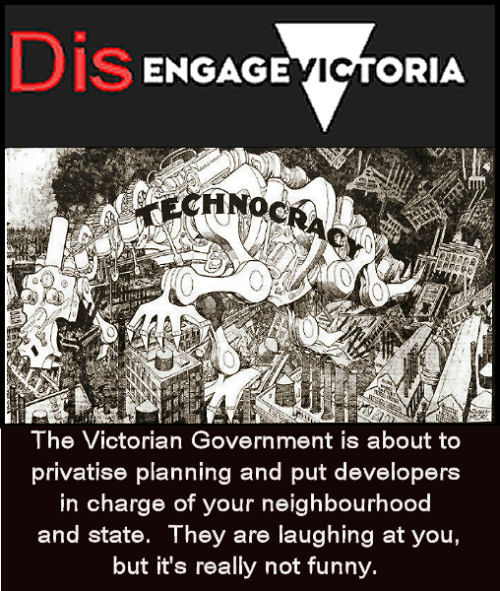
 Brigitte Bardot, possibly once the most famous 20th century French woman, has devoted her later life to the welfare of other species, via the
Brigitte Bardot, possibly once the most famous 20th century French woman, has devoted her later life to the welfare of other species, via the 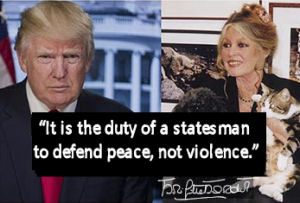

Recent comments